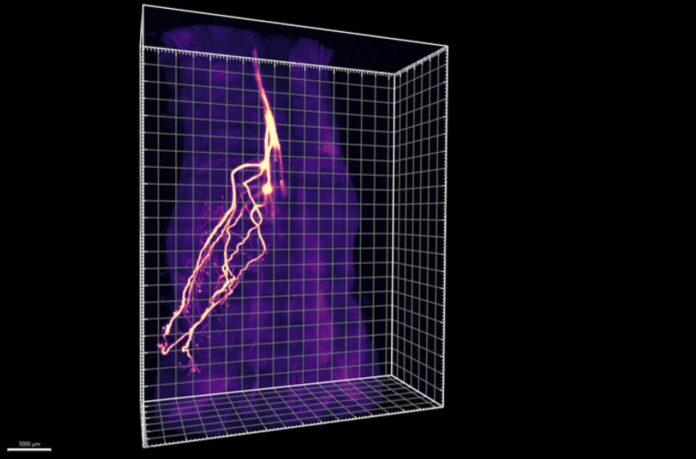What did the fatty say to the brain? For many years, it was believed that a person’s fat, also known as adipose tissue, sent information about stress and metabolism to the brain through hormones that were passively floating through the blood. Scientists from Scripps Research now announce in Nature that newly discovered sensory neurons transmit a stream of signals to the brain from adipose tissue.
“The discovery of these neurons,” according to co-senior author Li Ye, “suggests for the first time that your brain is actively surveying your fat, rather than just passively receiving messages about it.”
The results of this new study have significant implications.
According to Professor Ardem Patapoutian, a co-senior autho, This is another another illustration of how vital sensory neurons are to health and sickness in the human body.
Adipose tissue in mammals stores energy in the form of fat cells, which are then used when the body needs energy. It also regulates a variety of hormones and signaling molecules that are connected to metabolism and appetite. That energy storage and signaling frequently malfunction in disorders like diabetes, fatty liver disease, atherosclerosis, and obesity.
The presence of nerves in adipose tissue has long been known, but scientists had doubts that they were sensory neurons carrying information to the brain. Most people instead proposed that the sympathetic nervous system—the network in charge of our fight-or-flight response, which activates fat-burning pathways during stressful situations and physical activity—was primarily responsible for the nerves in fat. Clarifying the types and purposes of these neurons has been challenging because techniques used to examine neurons in the brain or closer to the skin don’t work well in deep adipose tissue, where nerves are difficult to observe or stimulate.
Ye and colleagues came up with two fresh approaches that help them get through these obstacles. First, the scientists used an imaging technique called HYBRiD to make animal tissues translucent, which helped them better follow the routes taken by neurons as they entered adipose tissue. The team found that roughly half of these neurons originated in the dorsal root ganglia, the brain region from where all sensory neurons emerge, rather than the sympathetic nervous system.
The group then used a second novel technique, which they called ROOT, for “retrograde vector optimized for organ tracing,” to more thoroughly investigate the function of these neurons in adipose tissue. ROOT allowed them to use a targeted virus to selectively eliminate small subsets of sensory neurons in the adipose tissue, and then they could see what happened.
Yu Wang, a graduate student in both the Ye and Patapoutian labs and the paper’s first author, says that the way these new methods came together “really made this research possible.”
“When we first started this project, there weren’t existing tools to answer these questions.”
The experiments showed that when the brain doesn’t get sensory messages from adipose tissue, programs triggered by the sympathetic nervous system that change white fat into brown fat become too active in fat cells. This leads to a fat pad that is bigger than usual and has a lot of brown fat, which breaks down other fat and sugar molecules to make heat. In fact, the animals with blocked sensory neurons also had elevated sympathetic signaling levels, which resulted in higher body temperatures.
According to the research, sympathetic neurons are necessary for the brown fat formation and fat burning, but sensory neurons are needed to switch these programs off. This suggests that sympathetic neurons and sensory neurons may have two opposing roles.
“This tells us that there’s not just a one-size-fits-all instruction that brain sends adipose tissue,” Li adds. “It’s more nuanced than that; these two types of neurons are acting like a gas pedal and a brake for burning fat.”
Although the connections and communications are essential for maintaining healthy fat, the team is still unsure of exactly what messages the sensory neurons from adipose tissue send to the brain. Future studies will examine what the neurons are sensing and whether other internal organs include cells with a similar structure.
Image Credit: Getty
You were reading: Study Finds New Signal Pathway In The Brain Acting Like “A Brake For Burning Fat”
